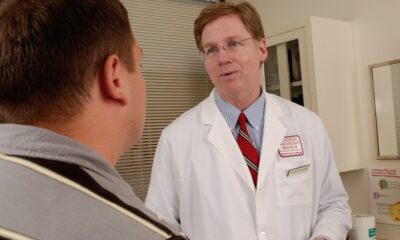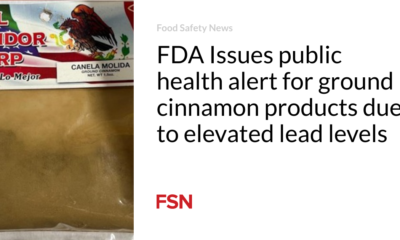Health
The role of law enforcement and public health in addressing meth abuse

Methamphetamine, or Meth for short, is a highly addictive stimulant that can have a devastating impact on individuals and communities. Its increasing availability and use have led to an increase in the number of public health emergencies and crime.
The United States, like many other countries around the world, has long faced a heartbreaking rise in overdose deaths. This crisis, initially caused by prescription opioids, heroin and fentanyl, appears to be entering a new and worrying phase. Experts point to a new wave fueled by a rise in deaths from stimulant drugs, particularly those involving cocaine and methamphetamine. If you are someone struggling with an addiction to meth abuse, know that there are resources available, such as Pathways meth addiction treatment. They can provide you with the support you need to recover.
The role of law enforcement
Law enforcement protects communities by taking down meth labs and arresting human traffickers. This role is very important. Dismantling production facilities and disrupting the supply of the drug disrupts the market and makes it harder for people to obtain meth. Furthermore, arresting major players in the drug trade sends a strong message of discouragement.
However, effective law enforcement can do more than just make arrests. Here are some additional ways police departments can contribute:
- Community Police: By building trust and rapport with residents, officers can identify areas with high meth activity. They can work with the community to address these issues.
- Support for Narcotics Anonymous (NA): Law enforcement can connect arrested individuals with resources and support groups such as NA. This can be the first step to recovery for people struggling with addiction.
- Border security: Strong border security measures can prevent methamphetamine from entering the country. Customs officials use advanced screening technologies and canine units to detect drug smuggling attempts.
The role of public health
Public health takes a more holistic approach by focusing primarily on preventing addiction and supporting those seeking recovery. Here’s how public health professionals play a critical role:
- Education and awareness campaigns: Public health campaigns that educate teens and young adults about the dangers of meth use, expose myths, and highlight the devastating consequences that could impact future addiction rates.
- Early Intervention Programs: Identifying and addressing risk factors such as mental health problems or social pressure in at-risk youth can prevent them from using drugs in the first place.
- Increasing access to treatment: Unfortunately, access to quality addiction care is a challenge in many areas. Public health professionals are working to make evidence-based treatment options readily available. Their initiatives can help people who use meth access detox programs, behavioral therapy, and… medication-assisted treatment (MAT).
- Harm reduction strategies: In some cases, harm reduction initiatives such as needle exchange programs may be helpful. Although not a cure, these programs can prevent the spread of infectious diseases among meth users, such as HIV and hepatitis C.
- Support services: Recovery from meth addiction is a long process. Public health programs can provide supportive services, such as individual counseling, group therapy, and housing assistance, to help people recover.
A joint effort against meth abuse
Law enforcement and public health agencies must work together to effectively address the meth crisis. Here’s how this collaborative approach can benefit the fight against meth:
- Sharing information: Regular communication and information sharing between law enforcement and public health officials are critical. Sharing data on trafficking trends, drug hotspots, and rising public health concerns can inform targeted enforcement efforts and tailored prevention and treatment programs.
- Deflection programs: Developing diversion programs can help divert people caught with small amounts of methamphetamine away from the criminal justice system and connect them with treatment services.
- Pre-arrest diversion programs: Implementing pre-arrest programs can give people struggling with meth addiction the opportunity to seek treatment before formal charges are filed.
Closing thoughts
Meth abuse is a challenging public safety and public health problem. A comprehensive response is needed with the help of law enforcement and public health sectors. By working together, law enforcement can disrupt the drug supply and public health initiatives can address demand, reduce harm, and support recovery. This collective effort can build a safer and healthier community for all.













